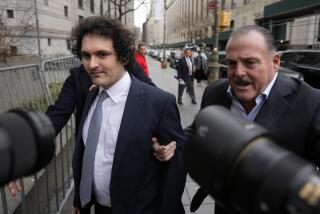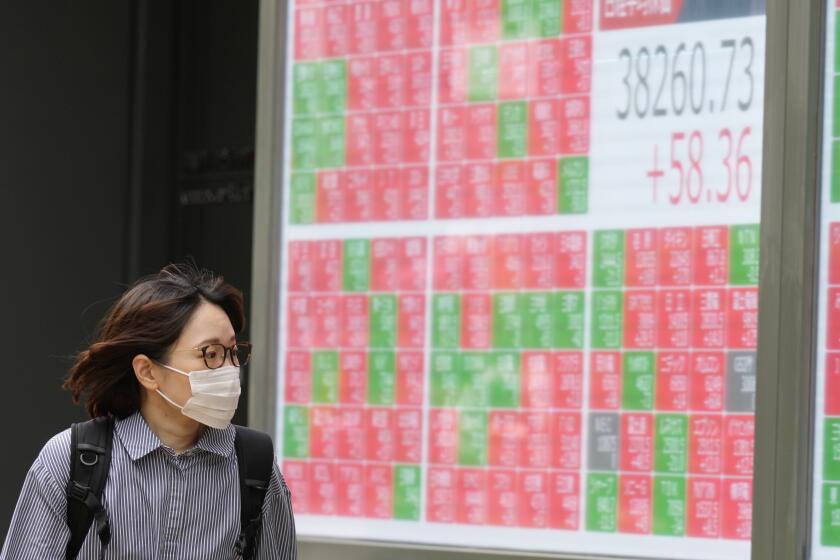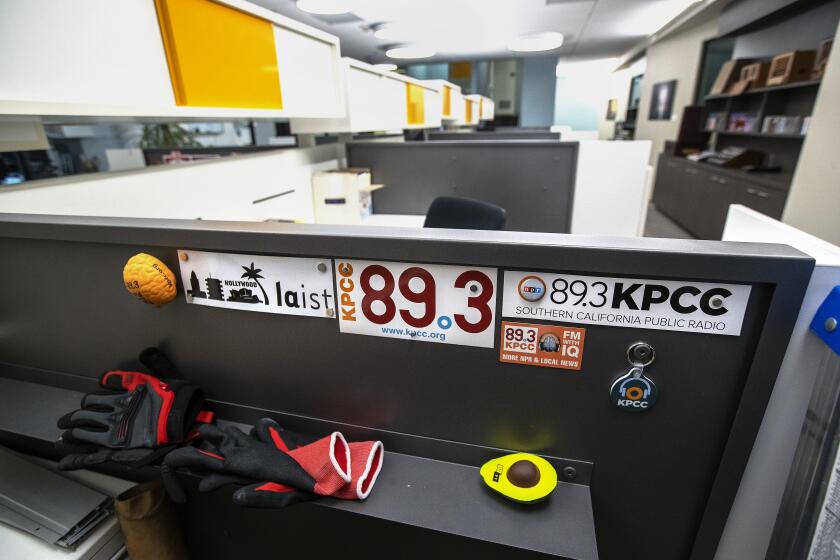Factory Orders Decline in April; Consumer Spending Pace Slows
Demand for big-ticket goods in April took its biggest nose dive since late 1991, and consumer spending rose at its slowest pace in nine months, signs that the speeding economy may be slowing a bit.
Orders to U.S. factories for costly manufactured goods fell 6.4% last month to a seasonally adjusted annual rate of $205.6 billion, pulled down by a record drop in demand for electronics, the Commerce Department said in one of two economic reports it released Friday.
Americans also pulled back somewhat in April from their generally free-spending ways, the second report showed.
Consumer spending, which accounts for two-thirds of economic activity and is the engine of the supercharged economy, rose 0.4% last month. That was the smallest increase since July.
At the same time, American incomes, a category that includes wages, interest and government benefits, grew by a brisk 0.7%. It is the second consecutive month in which income climbed faster than spending.
“We might conclude there is some fraying around the edges of the booming economy--that the economy is going from white-hot to perhaps simply red-hot,” said Mark Zandi, economist with RFA Dismal Sciences. “We might be seeing the first signs that the broader economy is throttling back a notch.”
The Federal Reserve has raised interest rates six times since June, including an aggressive half-point increase last week, trying to slow the economy and keep inflation from becoming a problem.
The increases are designed to raise borrowing costs and cool demand for big-ticket items such as cars and homes.
“Together, the reports provide unambiguous evidence of a slowdown emerging,” said National Assn. of Manufacturers’ economist Gordon Richards.
Friday’s reports, economists said, suggest that the Fed’s interest rate increases are beginning to bite. But analysts offered conflicting views as to whether the reports would discourage the Fed from pushing interest rates up again in June.
On Wall Street, stock investors, unconsoled by the reports’ new signs of a slowing economy, focused instead on the prospect of higher interest rates. The Dow Jones industrial average closed down 24.68 points at 10,299.24. Bond prices finished higher.
The 6.4% decline in orders for durable goods--items expected to last at least three years--was the steepest since December 1991 and followed the first increase this year, a 4.5% rise in March.
A record 20.1% plunge in orders for electronics and electrical equipment, including semiconductors, circuit boards and home appliances, led April’s decline.
(BEGIN TEXT OF INFOBOX / INFOGRAPHIC)
Durable Goods
New orders, in billions of dollars, seasonally adjusted:






